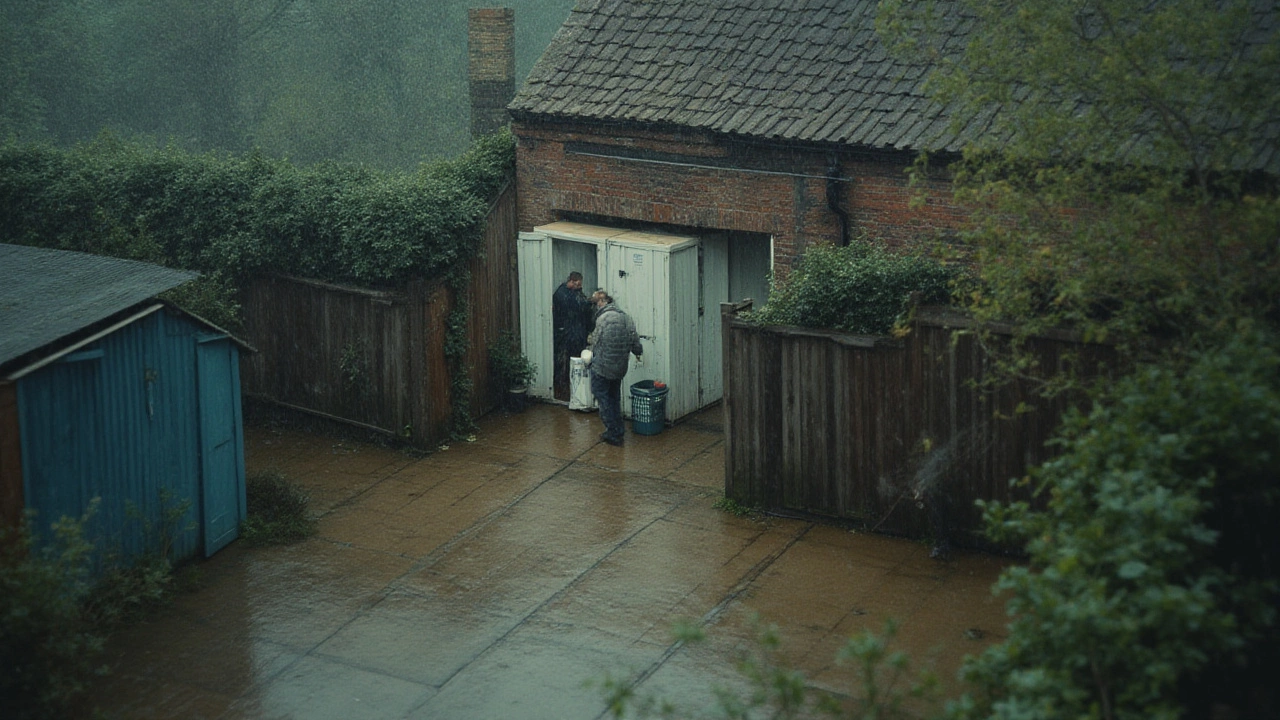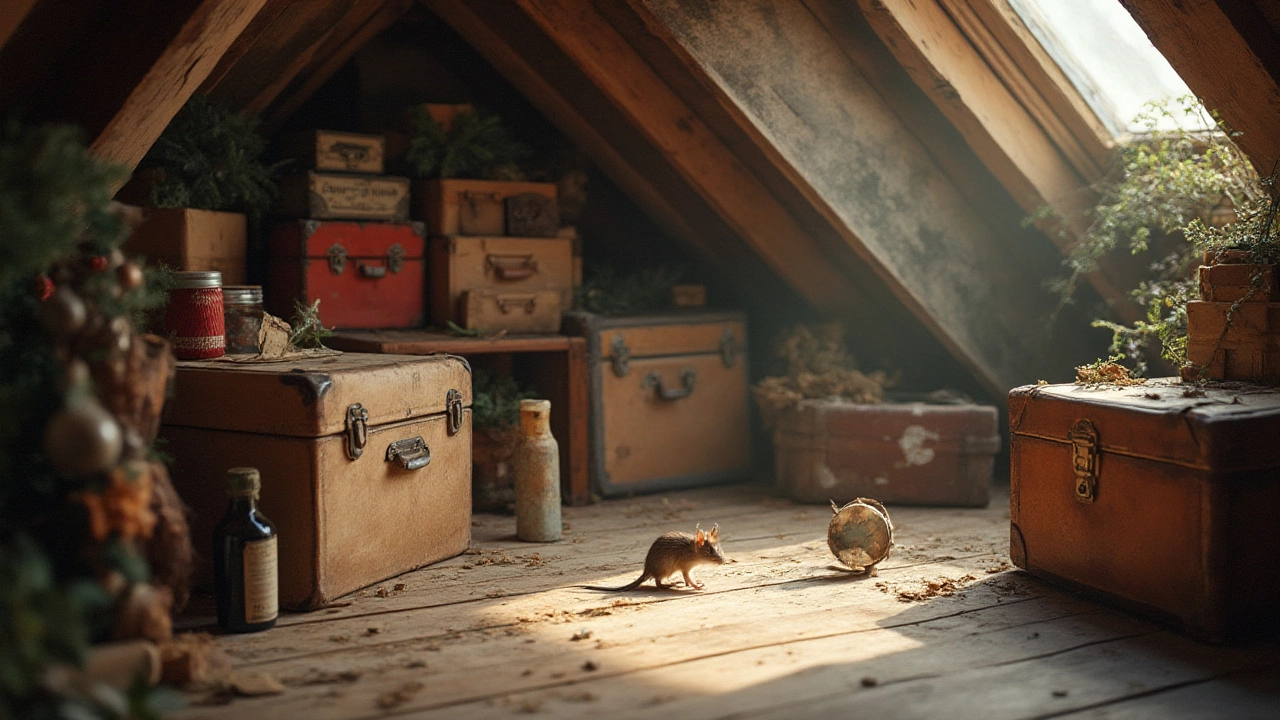Picture opening a storage unit or your garage and finding chewed cardboard, scattered droppings, or worse—an old sofa gnawed to the stuffing. Nothing makes your skin crawl quite like the sign that mice have moved in while you were away. These little freeloaders can squeeze through gaps as thin as a pencil, turning your carefully packed heirlooms into their own nesting paradise. Some people swear by home remedies… others invest in high-tech gadgets. So, what's the best repellent for mice in storage? The answer isn’t as simple as grabbing the first spray on Amazon. Let’s cut through the urban legends and marketing hype, and find what actually works.
The Truth About Mice: Why Repellents Are Only Half the Battle
Let’s get one thing out of the way: mice are survivors. They get into storage because they’re hungry, cold, and desperate for a hiding spot. Their teeth never stop growing, so they need to gnaw constantly—that’s why your favorite armchair is suddenly ‘custom’ chewed. You might have heard that peppermint oil keeps mice away, but here’s what researchers found—a 2017 study published in the International Journal of Pest Management showed peppermint oil works for about a day, and then mice just stroll back in. That’s not exactly a win.
The strong scents from essential oils fade quickly, especially in big or drafty spaces. Mice can easily just walk around a cotton ball soaked in oil. And those high-frequency ultrasonic devices? Some real-time monitoring showed mice grow used to the sound (think background noise at a busy coffee shop), ignore it, and go right back to looking for crumbs.
Mice can also remember routes and hiding places. So, even if you scare them off with sprays or gadgets, if there’s food or shelter they’ll try again. That’s why it’s not just about repellents—it’s about making your storage less inviting to them in the first place.
Commercial Mouse Repellents: Do They Live Up to the Hype?
Walk the aisles at any hardware store and you’ll find shelves full of sprays, granules, pouches, electronic gizmos, and traps, all promising a mouse-free zone. Let’s break down the popular choices, and see which ones have bite—and which ones are just wishful thinking.
- Scented Repellent Pouches: Usually made with peppermint, cedar, or eucalyptus, these sachets can help in small, sealed containers, but most users say you need to replace them often. Leave your storage unit closed for three months, and the scent will probably be gone.
- Ultrasonic Devices: The science here is sketchy. Some animal testing shows rodents react at first, but longer-term studies by pest control associations show that most mice ignore the sound by week two—especially if there’s a food source.
- Spray-On Repellents: Just like the pouches, sprays rely on strong smells. They do help immediately after application, but within a few days the effect wanes, especially in places with airflow. If you’re visiting your storage weekly and reapplying, these can help, but most folks want a set-and-forget solution.
- Granular Repellents: These pellets usually combine strong-smelling oils and absorbent stuff like clay. They help block small holes, which is a plus, but they lose potency when wet. Good for indoor storage, but outdoors or humid spaces cut their life by half.
So if you want a strong answer? Use repellents as only part of a bigger plan. Relying only on sprays or sound plugs is like locking your front door but leaving the windows wide open. It slows the mice, but doesn’t stop them.

Natural Versus Chemical: What’s Safe and What Works?
A lot of people worry about toxins around their belongings, and rightfully so. After all, nobody wants their antique quilts reeking of naphthalene. But does ‘natural’ always mean effective?
If you dig through the data, the most powerful deterrents are often the most old-school: mothballs and ammonia. Mothballs, specifically naphthalene, were the go-to for decades. But they’re not actually meant as mouse repellent—they’re for moths! Plus, they lose their punch as soon as they ventilate, and can leave a nasty stink on anything porous, like clothes or furniture. Ammonia-soaked rags seem more promising, since the smell mimics predator urine, but ammonia is corrosive and can be dangerous (and just as smelly as the mothballs). That’s a trade-off most folks don’t want.
Natural remedies like peppermint oil, cloves, cayenne pepper, or crushed garlic pop up on DIY blogs every winter. These options work by overwhelming the mouse’s nose at first—but mice are stubborn. The moment the scent fades, the problem is back. Some people like using dryer sheets, but studies show mice will just use them as nesting material if nothing better is around. It’s a hilarious mental image, but not great for your storage.
If you want a less-toxic option, certain commercial brands clarify exactly what oils and concentrations they use (Rodent Sheriff, Eco Defense), but check the ingredients list for pyrethrins or other synthetics if you’re sensitive to chemicals. Natural or not, all repellents need frequent reapplication.
Practical (and Proven) Steps: Combining Repellents and Prevention
Here’s the thing—nothing beats transforming your storage into a no-go zone for mice. Scientists at Cornell University found that when food is sealed tight, gaps are patched up, and moisture is minimal, mice stop showing up. So, your *best mouse repellent* isn’t just a spray—it’s a whole approach.
- Seal Cracks and Holes: Mice slip through holes the width of a pencil. Use steel wool, copper mesh, or hardware cloth to close any gaps, especially near doors or vents. Foam sealant helps but mice can chew through it—but they can’t get through steel wool.
- Store in Plastic: Cardboard boxes are a mouse’s paradise. Use sealed plastic bins, preferably ones with tight-fitting lids. Clear bins help you spot any activity early.
- Keep Food Out: Even a forgotten energy bar or bag of pet food is an open invitation. Don’t store food items at all—and double check bags inside stored purses or backpacks.
- Declutter: The more hiding spots and nesting spots you have, the easier it is for mice to set up shop. Keep things tidy, stack bins, and leave space between walls and your stuff so you can peek for droppings or nests.
- Use Repellents Wisely: Place commercial repellent pouches or granules in corners and near entry points. Swap them out monthly and reapply sprays if you visit your storage.
- Set Traps as Backup: Even if you don’t see mice, an empty snap trap can clue you into early activity. Some folks put peanut butter as bait but check every visit.
Combining these steps will outsmart even the savviest mice. Use repellent products to keep curious newcomers out, but prevention is the only long-term fix.

Real-World Results: Stories and Stats From Storage Owners
If you ask folks running storage facilities, you hear all kinds of war stories. A Texas storage site manager told me about renters packing bins with dryer sheets and peppermint pouches—yet still finding mouse droppings in winter. A Wisconsin couple reported that after ditching cardboard and using hard plastic tubs plus commercial pouches, the mice stopped nesting in their seasonal decorations. Real talk: the mix matters.
A 2019 pest control survey knocked on the doors of 140 self-storage facilities in the Midwest and asked about mouse problems over the past year. About 65% said they’d had at least one incident, with most issues popping up between October and March. Here’s a breakdown of what actually worked, based on their experience:
| Method | Success Rate (%) | Downside |
|---|---|---|
| Using sealed plastic bins | 85 | Costlier than cardboard |
| Commercial repellent pouches | 55 | Needs frequent replacement |
| Peppermint oil or other natural sprays | 33 | Short-lived effect |
| Ultrasonic devices | 21 | Mice adapt quickly |
| Traps (snap/live) | 74 | Requires monitoring |
| Physical sealing/crack repair | 92 | Labor-intensive upfront |
What jumps out? The most effective tactics focus on prevention—blocking, sealing, using bins—while repellents are an extra layer. If you treat them like a magic bullet, you’ll probably end up disappointed (and maybe out a few hundred bucks).
If you really want to shut mice out, go on the offensive. Do a walk-through with a flashlight, block holes and openings, pack with plastic, and freshen up repellents every month. Repellent alone won’t do it, but combined with these steps, you’ll finally make your storage a mouseless zone.


Write a comment